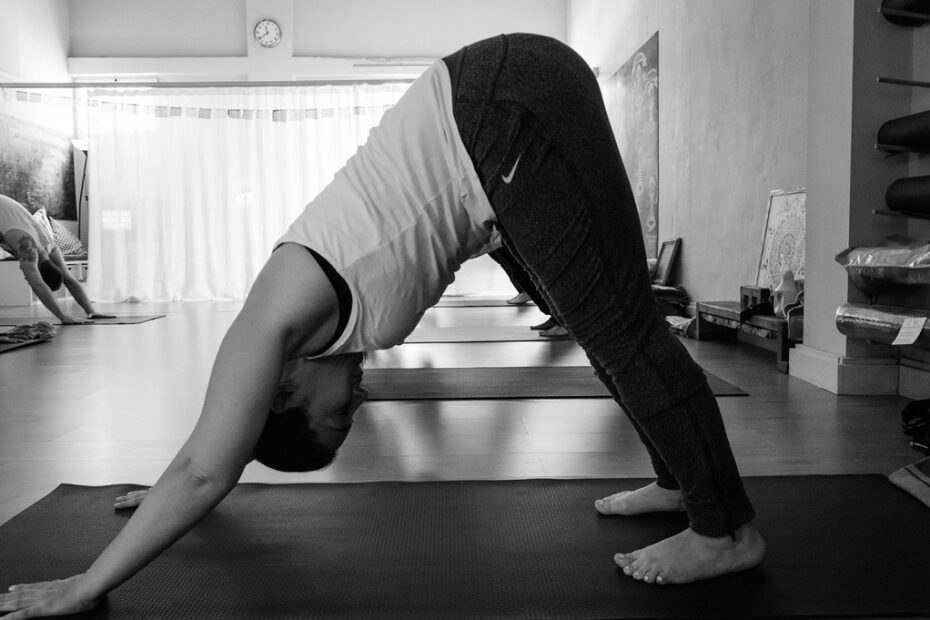Ashtanga Yoga is a dynamic form of yoga. Offering more movement and cardio intensity than the other more static yoga varieties, Ashtanga is an excellent option for a traditional cardiovascular centered workout, with the added benefits of increasing flexibility and strength. With equal focus on stamina, strength, and flexibility, the benefits of Ashtanga are a powerful addition to an overall fitness regimen.
History of Ashtanga
Ashtanga’s roots are with the ancient yoga sage Patanjali. In Greg Maehle’s book, Ashtanga Yoga: Practice and Philosophy, Maehle describes Patanjali’s idea that yoga was to be broken into eight limbs in order “to get each individual back from wherever their current position is, back into contact with their heart.” The eight limbs of yoga include ethics, observances, body, breath, withdrawal, concentration, meditation, and union with the Divine.
According to Maehle, because the complete practice of the eight limbs was not practical in daily life, Vedic Seer Vamana subsequently developed Ashtanga Yoga approximately 4000 years ago. Vamana’s adaptation allowed for the eight limbs of yoga to be practiced simultaneously. Ashtanga arrived in the modern world in 1948, through the teaching of Sri K. Pattabhi Jois.
An Overview of Teaching Methods in Ashtanga Classes
Ashtanga classes are generally a set sequence of postures, or asanas, done uninterrupted from beginning to end. To perform asanas correctly, a student must incorporate the use of vinyasa and tristhana. Vinyasa is a pattern of breath and movement used to internally cleanse. Tristhana is the combination of posture, breathing, and gaze.
The structure of Ashtanga in three groups of sequences that total six individual series. The first series, The Primary Series, detoxifies and aligns the body. The Intermediate Series follows The Primary Series and purifies the nervous system. The Advanced Series A, B, C, and D are four separate series that integrate strength and grace, requiring high levels of flexibility and humility.
Students must fully master the poses in each series before progressing to the next. Each successfully completed pose serves as a way to prepare the body for the next asana. Pace recommends that students learn Ashtanga through the teaching of a certified yoga instructor in a yoga studio. A class setting reduces risk to the body when put into unique and new asanas. Consistent moderate practice of any style of yoga is better than an intense practice done inconsistently.
For those who have previously practiced Ashtanga, David Swenson’s book, Ashtanga Yoga: The Practice Manual: An Illustrated Guide to Personal Practice, is a user-friendly resource. With over 650 photos, clear instructions, and commentary, the book is helpful in developing and maintaining an at-home Ashtanga practice.
Health Benefits of Ashtanga
The Mayo Clinic suggests that all types of yoga can be an effective way to manage stress and anxiety, which both have a significant impact on physical well-being. Adding yoga to an existing fitness regimen achieves potential stress reduction, increases fitness, manages chronic health problems, and enhances weight loss.
WebMD also promotes the physical benefits of yoga, including improving flexibility and strength, and creating lean, strong muscles without bulking up. Also known to lower blood pressure, experts believe yoga helps with hypertension, enhances lung capacity through use of unique breathing techniques, and even suggests that yoga leads to signs of improvement in memory and the ability to learn.
Ashtanga sets itself apart from other yoga methods because of an increased emphasis on the significant building of heat through vinyasa, which allows for much deeper stretches and flexibility. Vinyasa and the uniquely practiced asanas in Ashtanga also increase cardiovascular training and develop endurance. Author David Swenson describes the vinyasa as being one of the unique facets of Ashtanga that helps regulate the heart by changing the heart’s position from above the head to below the head through movement, which calls upon the heart to self-regulate blood pressure.
Achieving Fitness through Ashtanga Yoga
With a rich history transferred to the western world through the teaching of Sri K. Pattabhi Jois, Ashtanga has physical, emotional, mental, and intellectual benefits recognized by leading medical practices, including the Mayo Clinic. For someone looking to enhance a current fitness regimen, with the added benefits of increasing cardiovascular health and flexibility, along with decreasing stress and anxiety, Ashtanga Yoga is a valid option for consideration.
Sources:
Counter, Bill. “Ashtanga Frequently Asked Questions.” Yoga in Sacramento.
Jois, Sri K. Pattabhi. Home Page.
Maehle, Greg. Ashtanga Yoga: Practice & Philosophy. 1st ed. California: New World Library, 2006. Google Books.
Pace, Annie Grover. “Ashtanga Yoga in the Tradition of Sri K. Pattabhi Jois.” Ashtanga.com.
Pace, Annie Grover. Home Page.
Staff, Ashtanga.com. “Ashtanga Yoga Background.” Ashtanga.com.
Staff, Mayo Clinic. “Yoga: Tap Into the Many Health Benefits of Yoga.” MayoClinic.com.
Staff, WebMD. “The Health Benefits of Yoga.” WebMD.com.
Swenson, David. “Ashtanga and Cardiovascular Health & Coronary Heart Disease.” Ashtanga Yoga Productions. Web. Retrieved June 19, 2010.
